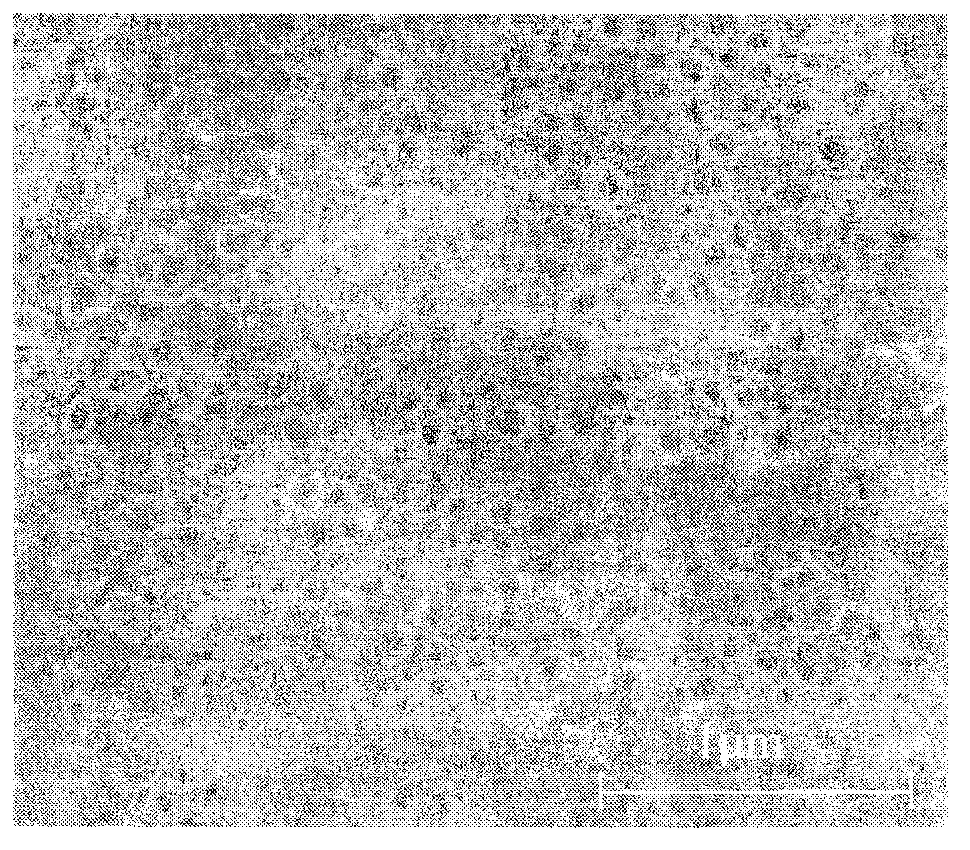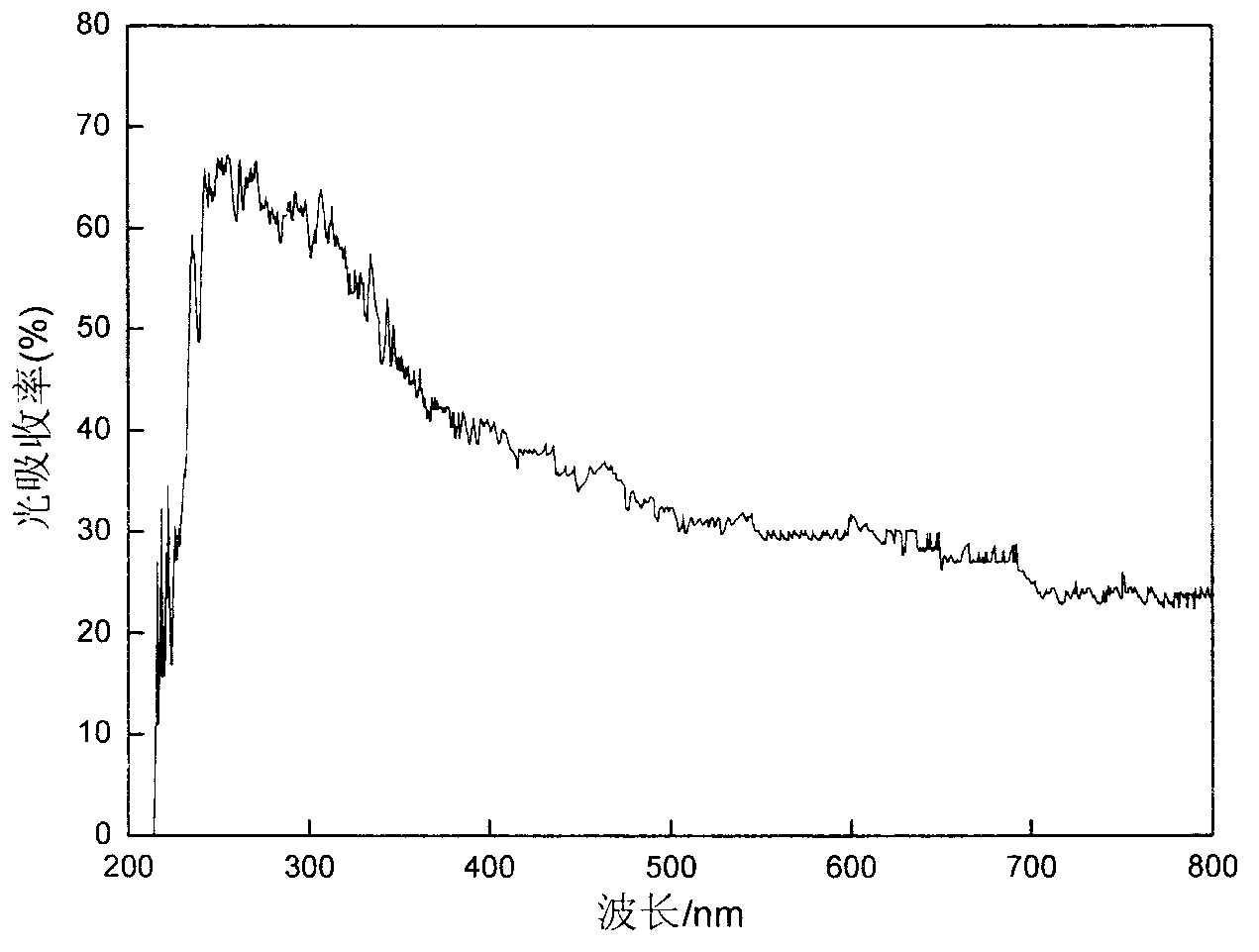Preparation method of titanium dioxide nano-tube-array photo-electrode used for removing organic pollutant
A technology of nanotube arrays and organic pollutants, applied in water pollutants, chemical instruments and methods, oxidized water/sewage treatment, etc., can solve the problem of high recombination rate of titanium dioxide photogenerated electrons and holes, affecting photocatalytic efficiency, and solar energy utilization Low efficiency and other problems, achieve good removal effect, improve photocatalytic activity, and avoid the use of toxic substances
- Summary
- Abstract
- Description
- Claims
- Application Information
AI Technical Summary
Problems solved by technology
Method used
Image
Examples
Embodiment 1
[0025] Such as figure 1 , 2 , 3, 4, and 5 show a method for preparing a titanium dioxide nanotube array photoelectrode for removing organic pollutants, the steps comprising:
[0026] 1) Cut tungsten-containing titanium sheets (tungsten90%) into strip-shaped foils of 100×10×0.2mm, clean them with decontamination powder, hydrofluoric acid, 1000-mesh sandpaper, 2000-mesh sandpaper Grinding and polishing, ultrasonic cleaning in acetone, ethanol and deionized water for 5 minutes;
[0027] 2) Using the tungsten-containing titanium sheet pretreated in 1) as the raw material, the tungsten trioxide and titanium dioxide nanotube arrays were prepared in situ by a one-step constant current and constant voltage anodic oxidation method, and the electrolyte was 0.5% NaF and 1.0M Na 2 SO 4 Mixed solution, the temperature is 25°C, the voltage is 20V, and the initial current is set to 0.005mA / cm 2 , oxidized for 2 hours, in situ generating nanotube arrays on the surface of tungsten-containi...
Embodiment 2
[0033] 1) Cut tungsten-containing titanium sheets (tungsten90%) into strip-shaped foils of 100×10×0.2mm, clean them with decontamination powder, hydrofluoric acid, 1000-mesh sandpaper, 2000-mesh sandpaper Grinding and polishing, ultrasonic cleaning in acetone, ethanol and deionized water for 5 min respectively.
[0034] 2) Using the tungsten-containing titanium sheet pretreated in 1) as the substrate, the tungsten trioxide-titanium dioxide nanotube array was prepared in situ by a one-step constant current and constant voltage anodization method, and the electrolyte was 0.4% NaF and 0.5M Na 2 SO 4 Mixed solution, the temperature is 25°C, the voltage is 20V, and the initial current is set to 0.004mA / cm 2 , oxidized for 2h, in situ generating nanotube arrays on the surface of tungsten-containing titanium sheet.
[0035] 3) The nanotube array prepared in step 2) was calcined at 450° C. for 2 hours, cooled in the furnace and then used for later use.
[0036] 4) With graphite pow...
Embodiment 3
[0041] 1) Cut tungsten-containing titanium sheets (tungsten90%) into strip-shaped foils of 100×10×0.2mm, and then clean them with decontamination powder, hydrofluoric acid, 1000-mesh sandpaper, and 2000-mesh sandpaper Grinding and polishing, ultrasonic cleaning in acetone, ethanol and deionized water for 5 min respectively.
[0042] 2) With the tungsten-containing titanium sheet pretreated in 1) as the substrate, the tungsten trioxide-titanium dioxide nanotube array was prepared in situ by a one-step constant current and constant voltage anodization method, and the electrolyte was 0.5% NaF and 0.8M Na 2 SO 4 Mixed solution, the temperature is 25°C, the voltage is 20V, and the initial current is set to 0.002mA / cm 2 , oxidized for 2h, in situ generating nanotube arrays on the surface of tungsten-containing titanium sheet.
[0043] 3) The nanotube array prepared in step 2) was calcined at 750° C. for 2 hours, cooled in the furnace and then used for later use.
[0044] 4) With ...
PUM
| Property | Measurement | Unit |
|---|---|---|
| clearance rate | aaaaa | aaaaa |
Abstract
Description
Claims
Application Information
 Login to View More
Login to View More - R&D
- Intellectual Property
- Life Sciences
- Materials
- Tech Scout
- Unparalleled Data Quality
- Higher Quality Content
- 60% Fewer Hallucinations
Browse by: Latest US Patents, China's latest patents, Technical Efficacy Thesaurus, Application Domain, Technology Topic, Popular Technical Reports.
© 2025 PatSnap. All rights reserved.Legal|Privacy policy|Modern Slavery Act Transparency Statement|Sitemap|About US| Contact US: help@patsnap.com



